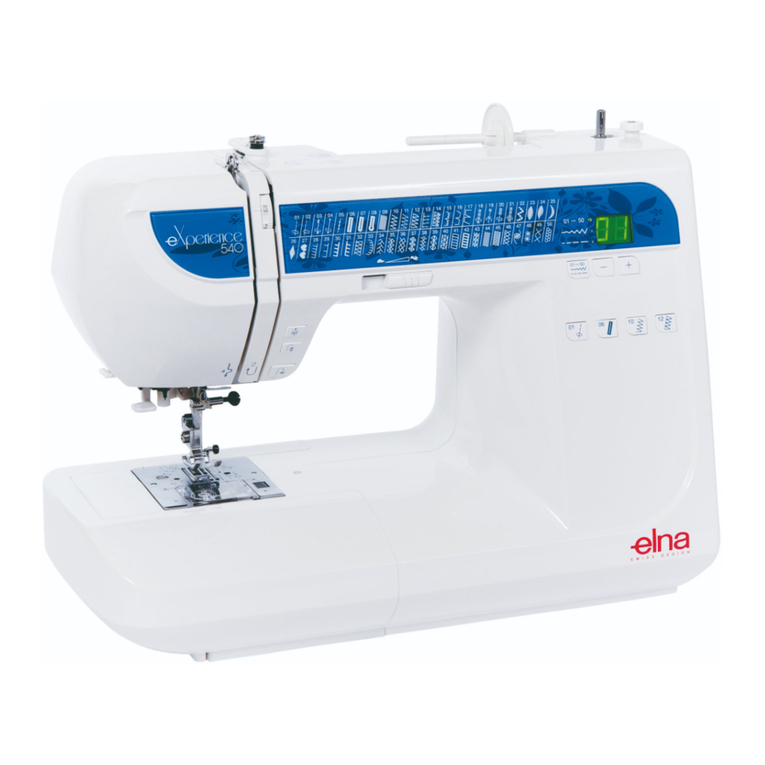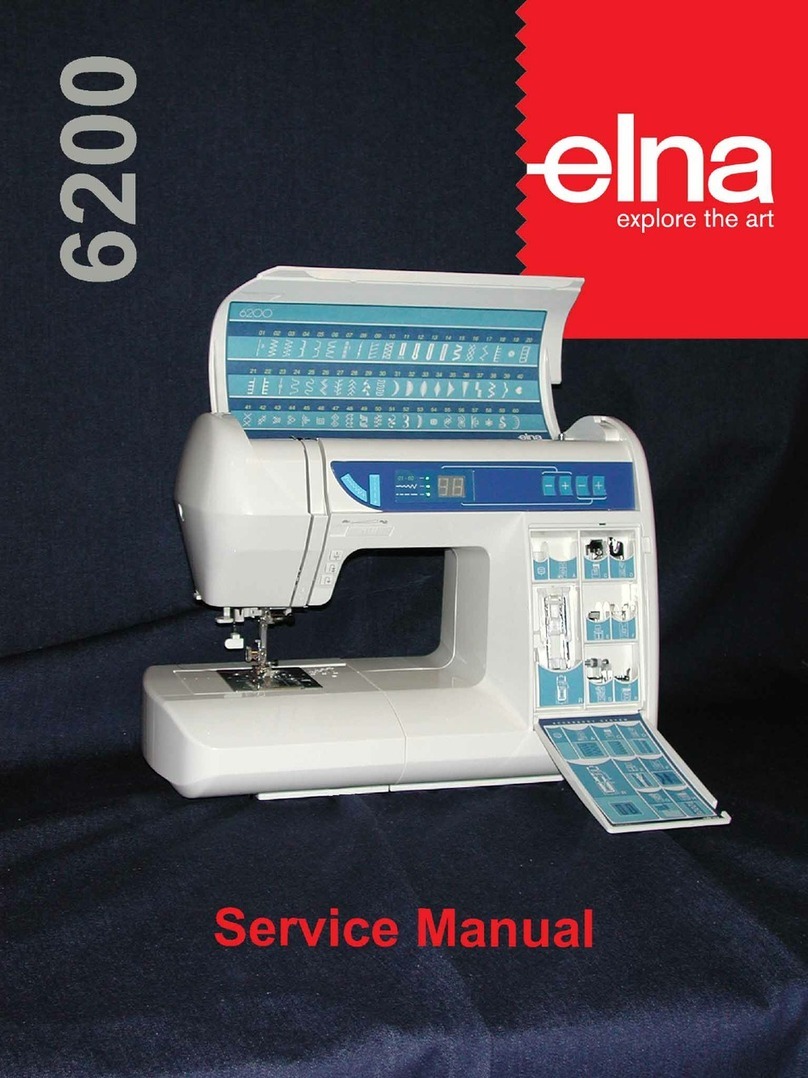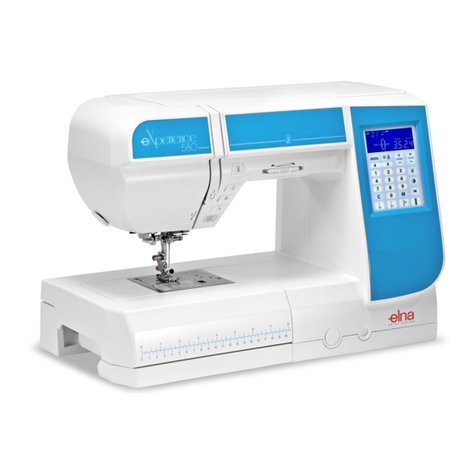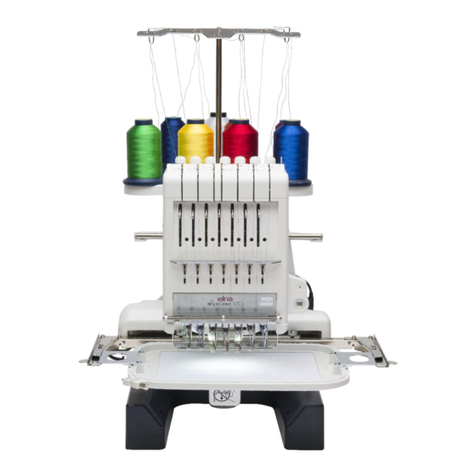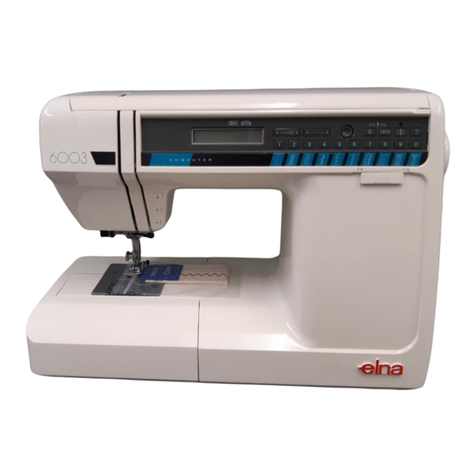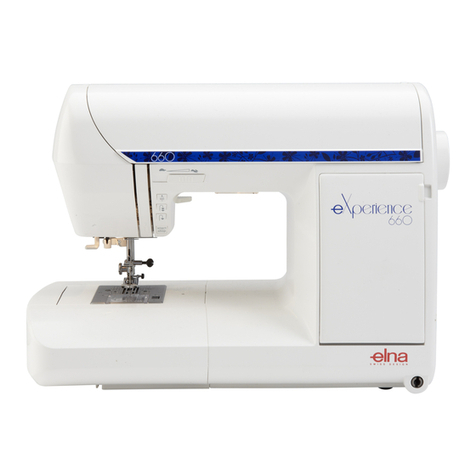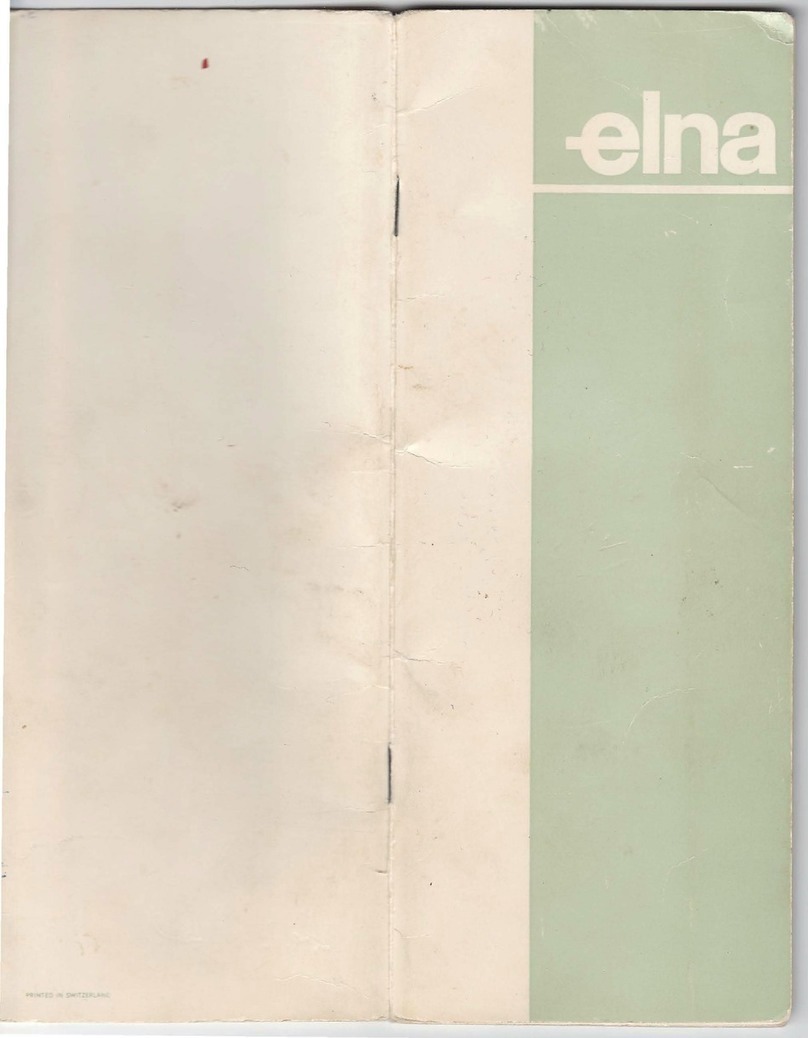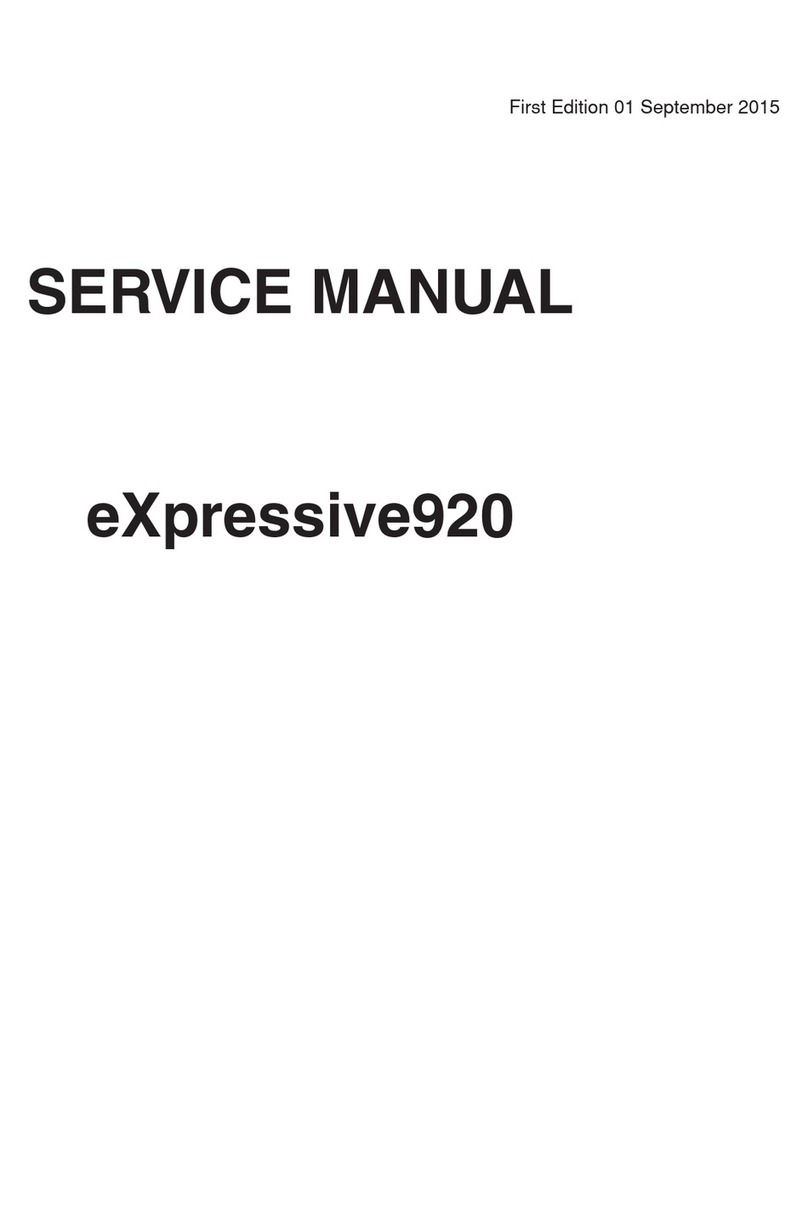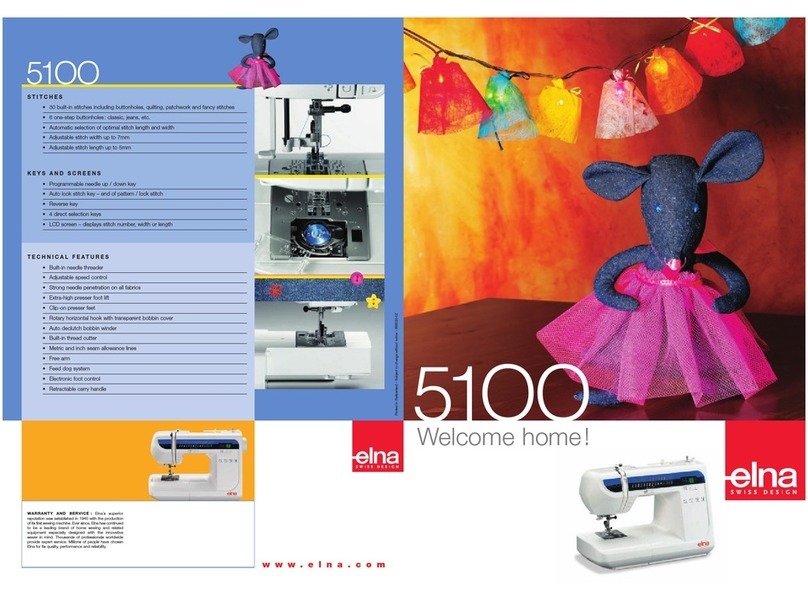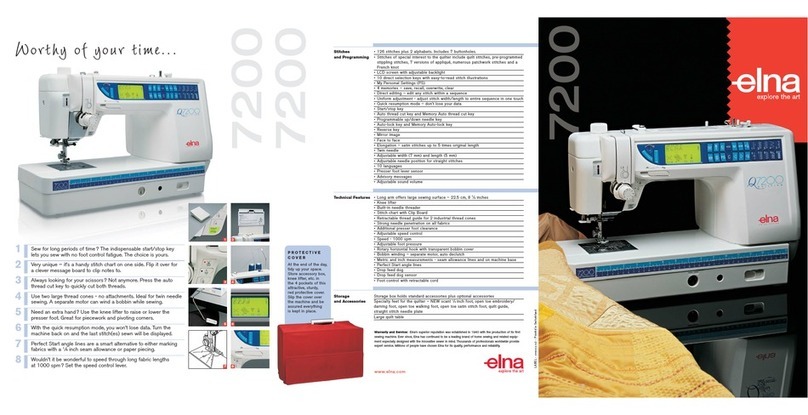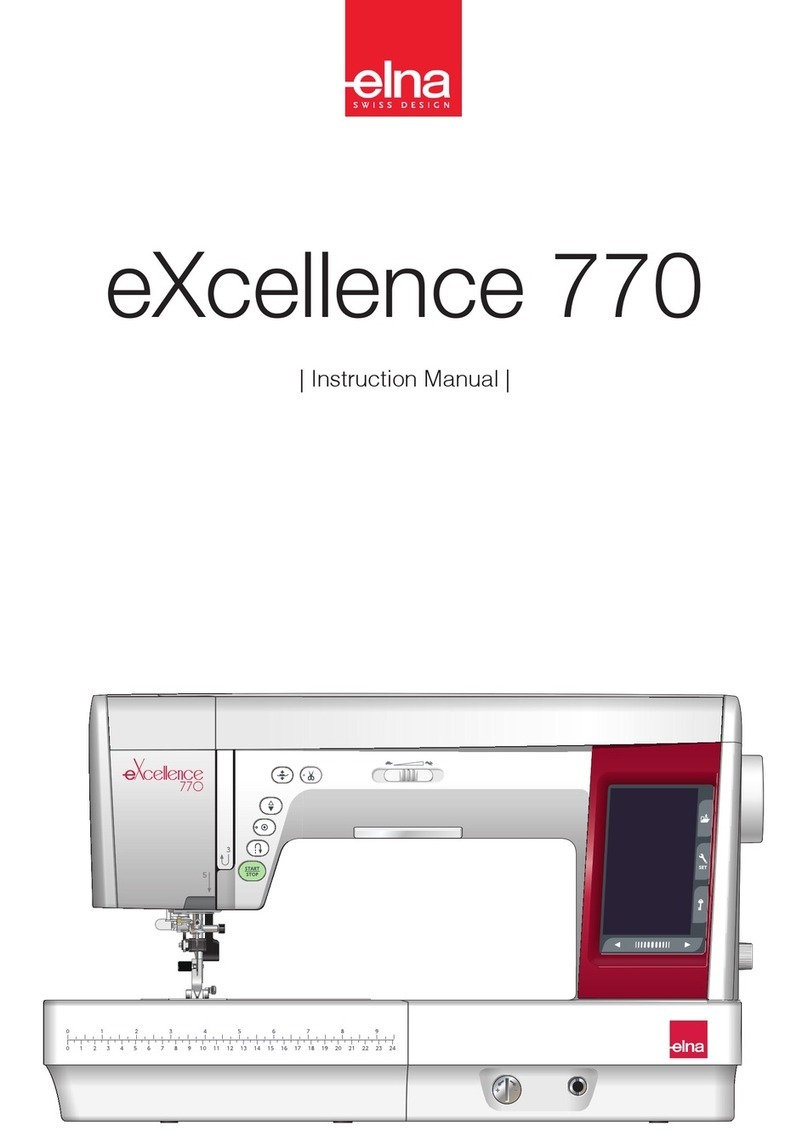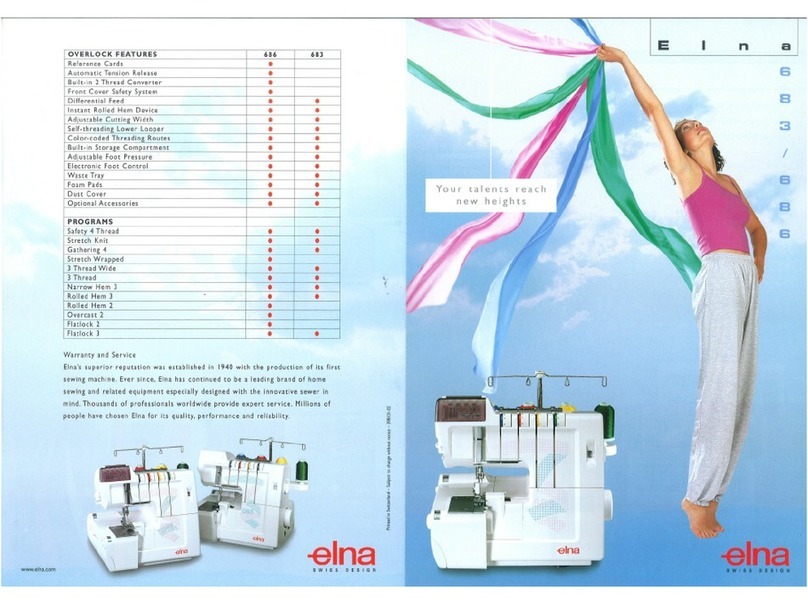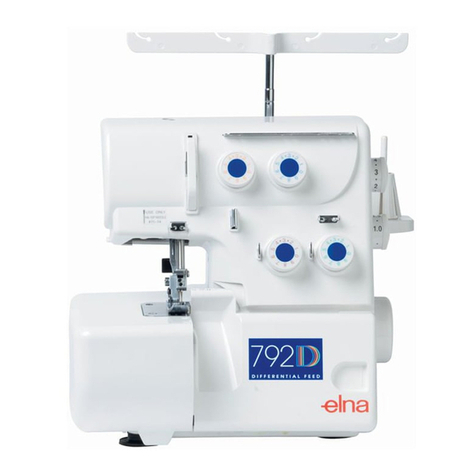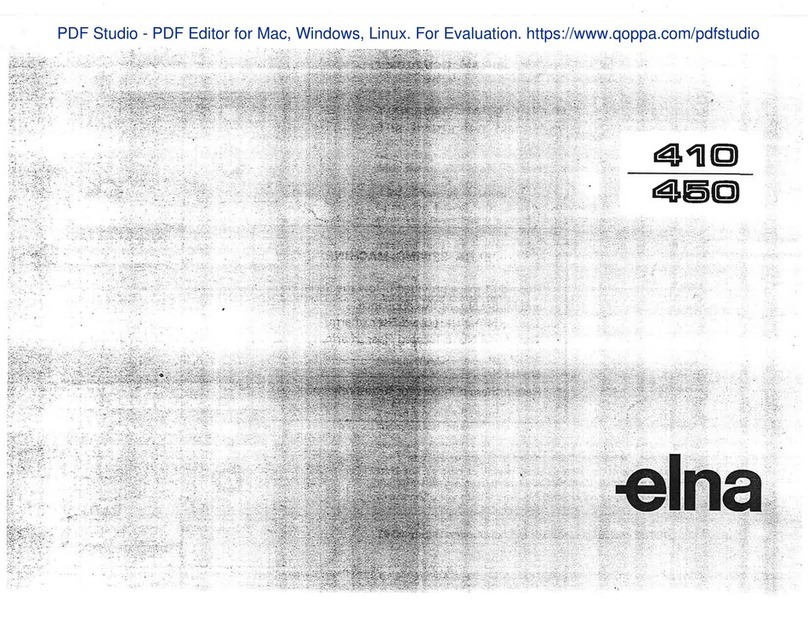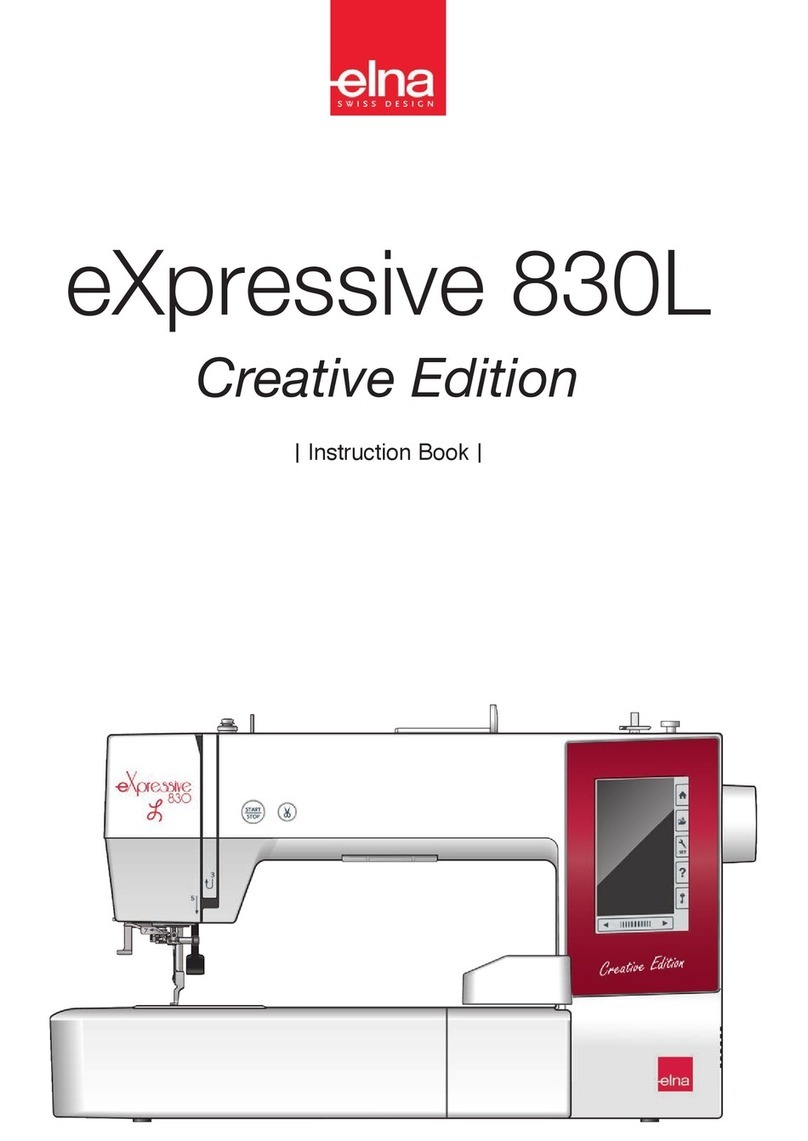2
Shell Tuck ...................................................................... 63
Twin Needle Sewing ................................................. 64-65
Satin Stitch Window Keys ............................................. 66
Satin Stitches – Single Repeat with Programmed
Lockstitch and Elongation ..................................... 67
Combining a Sequence with Mirror
Image and Auto-lock .............................................. 67
Reset Combined Sequence to Beginning ..................... 68
Adjusting Stitch Width or Length of an Individual Stitch
Within a Sequence ................................................ 68
Editing a Sequence ....................................................... 69
Alphabet Selection Window Keys ................................. 70
Sewing Alphabets .......................................................... 71
Check Memorized Sequence ........................................ 72
Files – Saving, Opening and Deleting ..................... 72-74
Quilting
Piecing Fabrics Together ............................................... 75
Quilt Guide ..................................................................... 75
Quilt Stitch ..................................................................... 76
Buttonhole Appliqué ...................................................... 76
Free Motion Quilting or Stippling .................................. 77
Stippling Stitch ............................................................... 77
Patchwork ...................................................................... 78
French Knots ................................................................. 78
Heirloom
Pintucks ......................................................................... 79
Bridging (Fagoting) ........................................................ 79
Hemstitches ................................................................... 80
Fringing .......................................................................... 81
Drawn Work ................................................................... 81
Smocking ....................................................................... 82
SECTION IV – Embroidery Sewing
Getting Ready to Embroider.......................................... 83
Adjusting the Needle Thread Tension ........................... 84
Embroidery Hoops ......................................................... 85
Stabilizers ...................................................................... 85
Templates ...................................................................... 86
Securing Fabric in Hoop ........................................... 86-87
Attaching Hoop to Carriage ........................................... 88
Thread Holder................................................................ 89
Embroidering Small Areas ............................................. 89
Embroidery Design Selection Window Keys ........... 89-90
How to Select a Built-in Design................................ 91-92
Sewing a Single Built-in Design .................................... 93
Ready to Sew Window After Embroidery Begins.......... 94
Alphabets .................................................................. 95-96
Sewing Alphabets ..................................................... 97-98
Alphabet Corrections ..................................................... 99
2 Letter or 3 Letter Monograms .................................. 100
Sewing with PC Design Cards (Optional) ................... 101
Edit Window .......................................................... 102-104
Combine a Built-in Design with Alphabet ............. 105-106
Files – Saving, Opening and Deleting ................. 107-109
Embroidering with Optional Free Arm Hoop C ........... 110
SECTION V – Taking Care of Your Machine
Cleaning .................................................................111-112
Changing the Light Bulb .............................................. 112
STITCH and EMBROIDERY CHARTS ...... 113-115
OPTIONAL ACCESSORIES ............................. 116
TROUBLESHOOTING ............................... 117-118
INDEX ......................................................... 119-121
NOTE: Information found in this instruction manual is
current at the time of printing. Elna reserves the right to
change and update specifications and information as
needed.
SECTION I – Machine Parts and Functions
Part Names ...................................................................... 3
Standard Accessories................................................... 4-5
Presser Foot and Accessory Definitions ...................... 6-7
Extension Table and Free Arm ........................................ 8
Controlling Sewing Speed ............................................... 9
Foot Pressure Dial ........................................................... 9
How to Drop the Feed Dog ........................................... 10
Presser Foot Lever and Additional Presser
Foot Clearance ........................................................ 10
Attaching and Removing Presser Feet ......................... 11
Attaching and Removing Shank .................................... 11
Seam Allowance Lines .................................................. 11
Needle Thread Tension ................................................. 12
Using the Fine Adjustment Screw ................................. 13
SECTION II – Getting Ready to Sew
Connecting Machine to Power Supply .......................... 14
LCD Touch Screen ........................................................ 15
Main Function of Keys ................................................... 16
Operation Keys .............................................................. 17
SET Preference Keys ............................................... 18-20
How to Access On Screen Information ......................... 21
Selecting the Correct Needle and Thread .................... 22
Changing Needles ......................................................... 22
Needle Definitions ......................................................... 23
Winding a Bobbin ..................................................... 24-25
Additional Spool Pin ...................................................... 24
Inserting the Bobbin ...................................................... 26
Threading the Machine.................................................. 27
Built-in Needle Threader ............................................... 28
Drawing Up the Bobbin Thread ..................................... 29
SECTION III – Traditional Sewing
Traditional Sewing Window Keys .................................. 30
How to Select a Stitch and What
the Symbols Represent ......................................... 31
Straight Stitch ................................................................ 31
Starting to Sew .............................................................. 31
Changing Sewing Direction ........................................... 32
Finishing Off a Seam ..................................................... 32
Cutting the Threads ....................................................... 32
Adjusting Needle Position or Stitch Length .................. 33
Sewing on Heavy Fabrics ............................................. 34
Gathering ....................................................................... 34
Zipper Insertion ........................................................ 35-37
Rolled Hem .................................................................... 38
Zigzag Stitch .................................................................. 39
Overcasting ................................................................... 39
Satin Stitch Appliqué ..................................................... 40
3-Step Zigzag ................................................................ 40
Mending a Tear .............................................................. 41
Applying Elastic ............................................................. 41
Blind Hem Stitches ........................................................ 42
Lingerie Stitch ................................................................ 43
Basting Stitch................................................................. 43
Triple Seam ................................................................... 44
Stretch Seam ................................................................. 44
Double Overlock Stitch .................................................. 45
Super Overlock Stitch.................................................... 45
Super Stretch Stitch ...................................................... 46
Buttonholes ............................................................... 47-55
How to Sew on a Button ................................................ 56
Darning ..................................................................... 57-58
Bartacks ......................................................................... 59
Arrowtack ....................................................................... 60
Eyelets ........................................................................... 60
Decorative Stitch Window Keys ............................... 61-62
Saddle Stitch ................................................................. 63
TABLE OF CONTENTS
